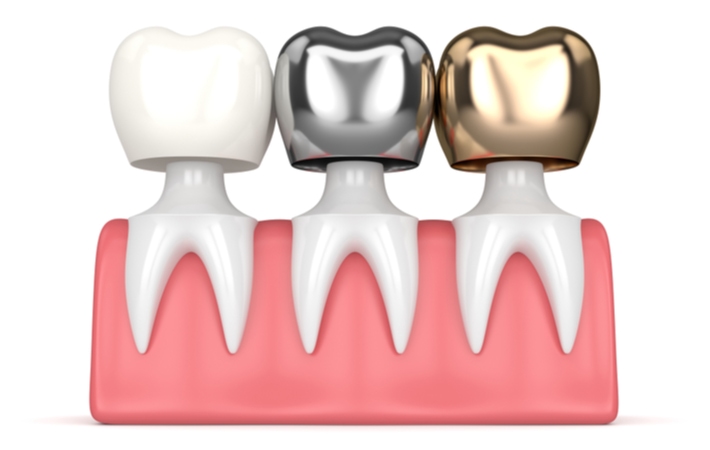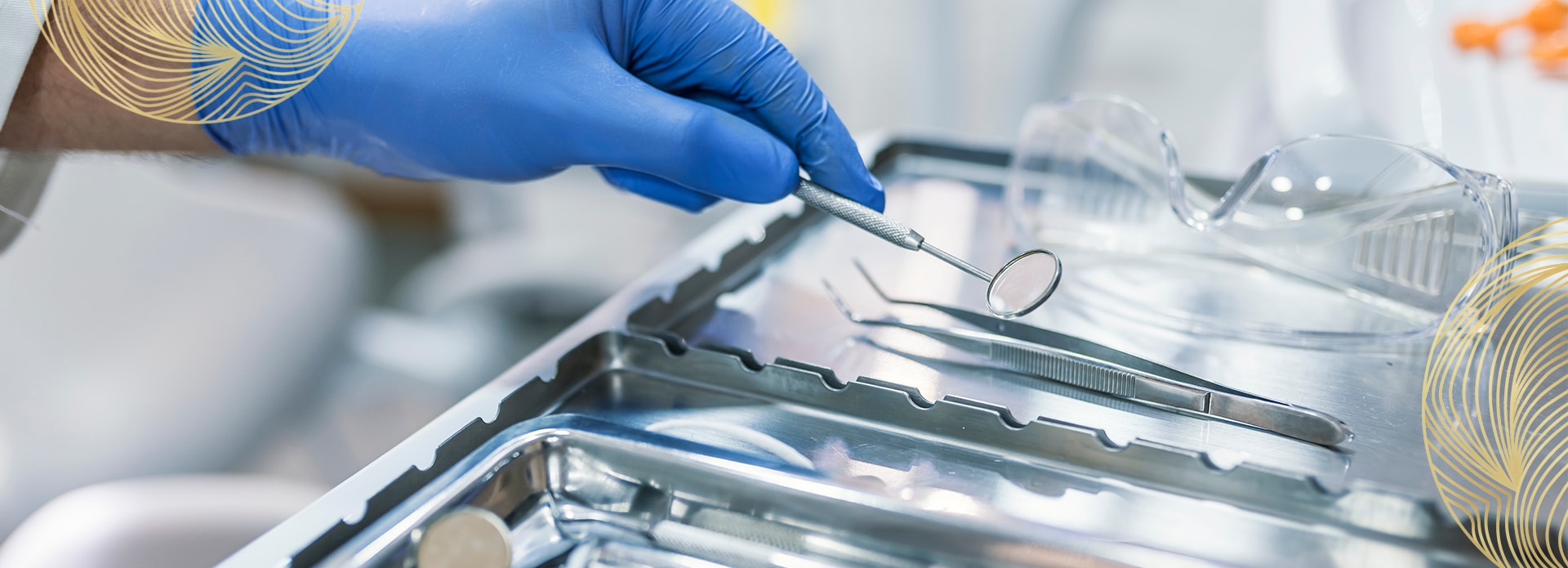Damaged teeth can impact your self-esteem, the function of your bite, and your overall oral health. Thankfully, there are many options for restorative dentistry to help bring your smile back to its very best.
Sometimes referred to as caps, dental crowns are one such restorative procedure. They can be used to address function or can be used to improve aesthetics.
As with any restorative dental procedure, it is important to choose an experienced, detail-oriented professional with significant experience in cosmetic dentistry.
Read on to learn more about dental crowns, their application, and the materials they are commonly made from.
What Is a Dental Crown?
Dental crowns can restore a damaged tooth to better function, shape, and appearance. As the name suggests, a crown is a hollow artificial tooth that can fit over and adhere to the existing broken or discoloured tooth.
Crowns cover the tooth’s entire surface and reach down to the gumline. An experienced dentist will be able to match the crown to your natural teeth, leaving everyone you smile at virtually unaware that a crown has been placed.
Why Would I Need a Dental Crown?
Dental crowns may be placed for the following reasons:
- A large filling is not strong enough to protect the tooth from the force of biting and chewing.
- A root canal has been performed on a back tooth and needs further protection against fracturing.
- One of the back teeth may have a crack in it.
- There isn’t enough structure remaining in the natural tooth to hold a filling.
- The front teeth are showing discolouration.
How Are Dental Crowns Placed?
Crowns are approximately 1 to 2 millimetres in thickness. To accommodate this, the tooth receiving the crown will need to be re-shaped to accommodate it.
The timeline of the procedure varies based on where the crown will be created.
- If the crown is to be fabricated in office, the tooth will be scanned with a 3D scanner and the crown will be created and cemented.
- If the crown is to be fabricated in a dental laboratory, a 3D scan or impression will be taken of the tooth and then a temporary plastic crown will be made. Between 7 and 10 days later, you will need to return to the office to have the crown cemented.
The placement procedure is usually painless, and if necessary, you will receive an anesthetic to minimize any discomfort. As when any dental work is done, the internal nerve can be affected.
Most often, this does not manifest as pain but rather “awareness” or feeling a bit of sensitivity for up to a week. If sensitivity lasts longer or if there is any pain or ache, the tooth may require a root canal.
Sometimes, in the event of discomfort, all that is needed is a slight adjustment so that the tooth can move freely in all positions. This just takes a few minutes and no anesthetic is required.

Types of Crowns
As with any dentistry, crowns are designed to be tailored to your unique situation. To choose the best type of crown material, your dentist should bear in mind the crown’s placement area in the mouth, your oral habits, any allergens, and of course, your preferences as the patient.
Here are some of the materials crowns can be made from:
Gold
Gold crowns are far from the most common type of crown. They can be used where there is limited room in the tooth or where there is a need to preserve as much tooth structure as possible. Gold is less abrasive than other crown materials so some patients specifically want the material for the clean mouthfeel it provides.
Patients may also request gold crowns for cultural or aesthetic reasons. Gold crowns are not made entirely of gold though—other alloys such as palladium, platinum, and silver may also make up the crown.
Porcelain Fused to Metal
Porcelain fused to metal crowns are the most common type of crown used over the past few decades. They contain a metal alloy core with porcelain fused to the outside to help the crown blend in with the colour of the neighbouring teeth.
While these are extremely strong, they do have a dark metal line that is apparent along the gumline that many patients dislike. Owing to the metal alloy, there is also the potential for allergic reactions to these crowns.
Emax
Emax crowns are made from lithium disilicate ceramic. This material is both translucent and durable and easily matches the look of your other teeth. Owing to the ease of colour matching, this material is most commonly used on front and side teeth since beauty and aesthetics are most important in these areas.
White Metal Zirconium
Zirconia crowns are made from zirconium dioxide, a very durable type of metal. While these crowns are categorized as ceramic, their material is more closely related to titanium.
They are a great match for back teeth due to their strength and the way they blend in colour-wise.
Cerec
Cerec stands for Chairside Economical Restoration of Esthetic Ceramics. These crowns are made with computer-aided design and computer-aided manufacturing (CAD/CAM) technology.
They are milled with a 3D printer in office and cemented the same day. Cerec crowns are generally made from porcelain or a resin composite. The material may not be the best choice for back teeth, depending on your biting and grinding pressure.
How Long Do Crowns Last?
Crowns typically last between 5 and 10 years. They are not intended to last a lifetime.
The longevity of your crown will depend on a few factors. Some of the reasons a crown may need to be replaced include:
- Improper oral hygiene
- Aesthetics
- Gum recession
- Biting and grinding
- Chips or breaks
- Root canals
Of course, proper care of your crown and exceptional oral hygiene habits can prolong the life of your restorative dentistry.
Caring For Your Crown
Caring for crowns is not much different than caring for your other teeth. Regular brushing and flossing are imperative.
Sometimes, crowns can dislodge after eating sticky foods like caramels or toffee. If this happens, keep your crown, clean it, and bring it back to the dental office—sometimes, they can be re-cemented. Teeth are not static, they move quite quickly, so time is of the essence if there is hope for the same crown to be placed again.
Avoid chewing on harder foods or using your teeth as tools if you wish to prolong the life of your crown. If you grind or clench your teeth, speak to your dentist about a nightguard to prevent damage.
Your dentist will make specific recommendations based on your unique situation.




